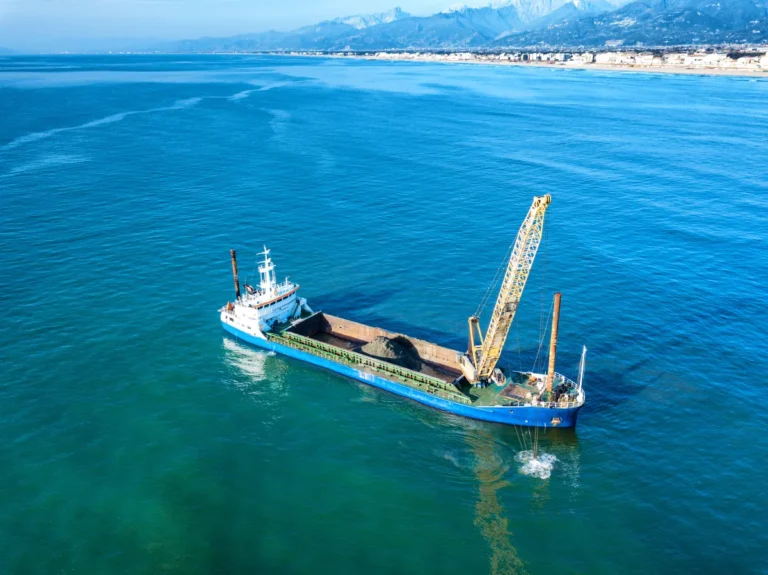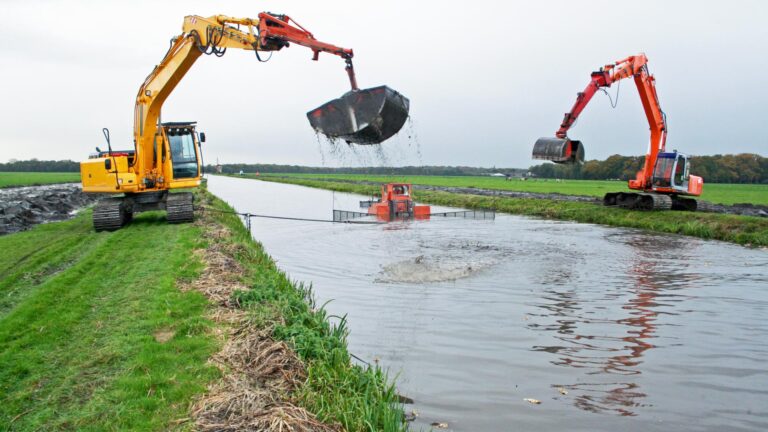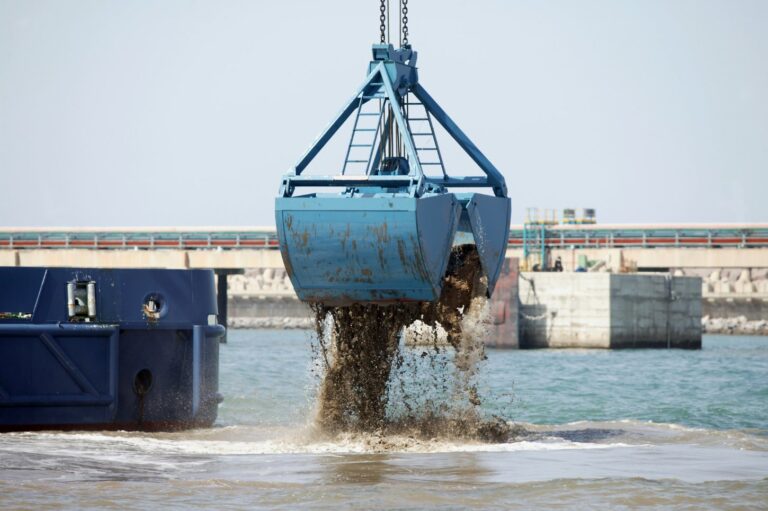Book Appointment Now
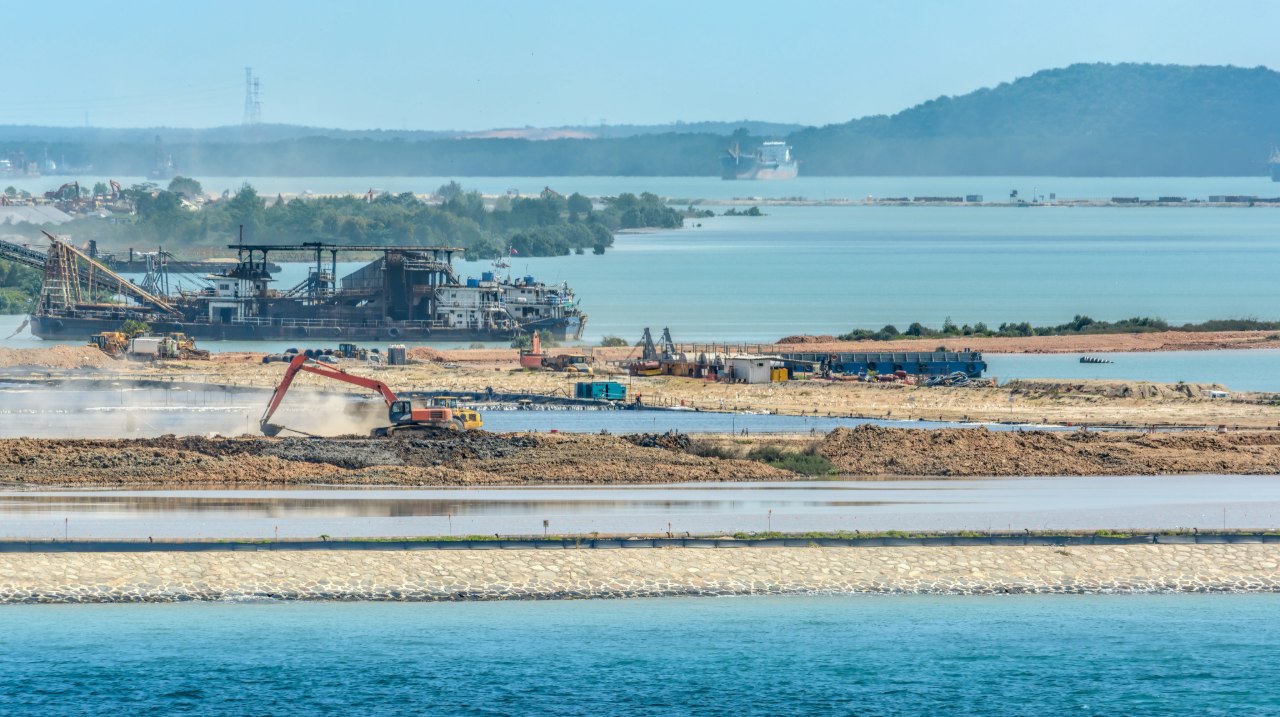
Beach Nourishment and Sand Reclamation: Dredging Pump Best Practices
Beach nourishment and sand reclamation are critical coastal management strategies that protect shorelines, restore eroded beaches, and support long-term environmental resilience. These processes involve transporting and depositing large volumes of sand or sediment to rebuild beach profiles, protect infrastructure, and enhance coastal ecosystems. For such large-scale marine operations, the choice of equipment directly influences project efficiency, environmental compliance, and return on investment.
At the heart of these operations is the dredging pump, a high-capacity system designed to handle abrasive materials, long pumping distances, and variable flow conditions. Whether the project involves reclaiming land for port expansion, restoring a recreational shoreline, or safeguarding naval facilities, using the right pump technology is essential for operational success.
Modern hydraulic dredge pump designs enable high-volume sand transfer with minimal downtime, while advanced suction dredge pump systems allow precision sediment removal in environmentally sensitive zones. This combination of performance, adaptability, and durability makes dredging pumps indispensable for government agencies, engineering contractors, and heavy industry clients who demand cost-effective and sustainable coastal solutions.
Understanding Beach Nourishment and Sand Reclamation
1. Definition and Key Differences
Beach nourishment refers to the process of adding sand or sediment to an eroded shoreline to restore its original width, height, and protective function. This approach relies heavily on dredging pump systems to transport material from offshore deposits, riverbeds, or designated borrow areas.
Beach reconstruction, often used interchangeably with nourishment, typically focuses on restoring both the sand profile and associated coastal features, such as dunes or vegetation. In contrast, sand reclamation is a broader term that includes creating new land or extending coastlines, often for infrastructure projects, using large-scale hydraulic dredge pump operations.
From a procurement perspective, understanding these distinctions is vital when specifying equipment. For example, a suction dredge pump might be selected for targeted sediment removal in confined areas. In contrast, a high-capacity hydraulic dredge pump is better suited for large-scale sand reclamation over extended distances.
2. Primary Objectives
Coastal Erosion Control
By reinforcing the shoreline, beach nourishment mitigates wave action and storm surge impacts. A well-configured dredging pump ensures consistent delivery of sediment, enabling a uniform beach profile that acts as a natural barrier.
Infrastructure and Property Protection
Nourished beaches provide a buffer zone that safeguards coastal roads, ports, residential areas, and military installations. Selecting a durable hydraulic dredge pump helps maintain pumping efficiency even in challenging marine conditions, reducing project delays and protecting valuable assets.
Environmental Habitat Preservation
Healthy beaches support ecosystems for marine life, nesting birds, and other species. Using a precision suction dredge pump allows controlled sediment placement, minimizing ecological disruption while achieving habitat restoration goals.
Enhancing Tourism and Recreational Areas
Tourism-driven economies benefit from wider, more attractive beaches. Reliable dredging pump systems ensure projects are completed within deadlines, maximizing seasonal readiness for recreational use. The ability to switch between a high-output hydraulic dredge pump and a targeted suction dredge pump provides flexibility for different site conditions and objectives.
The Role of Dredging Pumps in Coastal Projects
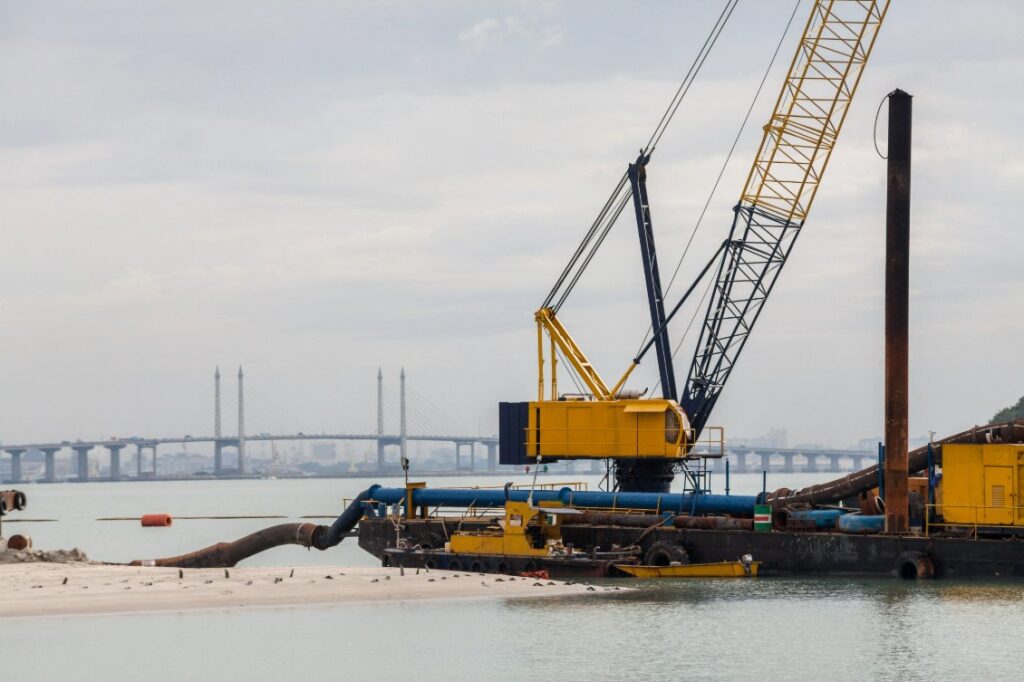
1. How Dredging Pumps Work in Sand Transfer
In beach nourishment and sand reclamation, the dredging pump serves as the primary mechanism for moving sediment from the borrow source to the placement site. This process operates on the hydraulic transport principle, where a mixture of water and sand is pumped through a sealed pipeline system. The hydraulic dredge pump uses high-pressure water flow to mobilize sediment efficiently, enabling continuous transfer over significant distances.
For large-scale coastal projects, the pumping system is often integrated with booster stations to maintain consistent flow rates, especially when transporting material over several kilometers or to elevated deposition sites. These booster stations work in tandem with the main dredging pump, ensuring minimal energy loss and maintaining the desired slurry concentration. In confined or environmentally sensitive areas, a suction dredge pump is often preferred for its ability to remove sediment with precision, reducing the risk of over-excavation and environmental disturbance.
2. Types of Dredging Pumps Used
Hydraulic Dredge Pump – Designed for high-volume sand and slurry transfer, this type of dredging pump is ideal for large-scale reclamation projects, port expansions, and major beach nourishment operations. Its ability to handle abrasive materials and operate over long pumping distances makes it a preferred choice when time efficiency and volume capacity are critical.
Suction Dredge Pump – Built for targeted sediment removal, the suction dredge pump is effective in precision dredging tasks such as restoring navigation channels or working around sensitive marine habitats. It allows operators to focus on specific areas without disturbing surrounding sediments, ensuring compliance with environmental regulations.
Selecting between a hydraulic dredge pump and a suction dredge pump depends on multiple factors, including project scale, site access, sediment type, and the required accuracy of material placement.
Best Practices for Selecting the Right Dredging Pump
4.1 Assessing Project Requirements
The first step in selecting the right dredging pump is understanding the specific operational demands of the project. Sediment characteristics—such as grain size, density, and abrasiveness—play a major role in pump selection, as these factors influence wear rates and energy requirements. For example, coarse, abrasive sand may require a heavy-duty hydraulic dredge pump with reinforced components, while finer sediments in environmentally sensitive areas might be better suited to a suction dredge pump.
Distance and elevation head are equally critical. Projects that require pumping over extended distances or uphill from the borrow site to the deposition point may need higher head capabilities and the integration of multiple booster stations. Environmental and regulatory constraints must also be considered, especially in projects near protected marine ecosystems, where precision offered by a suction dredge pump may be necessary.
2. Matching Pump Specifications to Operational Needs
Once the project parameters are defined, the dredging pump must be matched to operational requirements. Flow rate, head, and overall efficiency determine whether the pump can meet production targets without overloading the system. Marine applications demand high resistance to wear, making materials like high-chrome alloys or heavy-duty liners a worthwhile investment.
Compatibility with other equipment—such as excavators, barges, or cutter heads—is also crucial. A hydraulic dredge pump integrated with excavation equipment can handle large-scale sediment intake, while a suction dredge pump mounted on a smaller vessel can maneuver in tight or shallow locations for selective material removal. By aligning pump specifications with these operational considerations, project teams can reduce downtime, minimize maintenance costs, and maximize output.
Operational Best Practices for Pump Performance
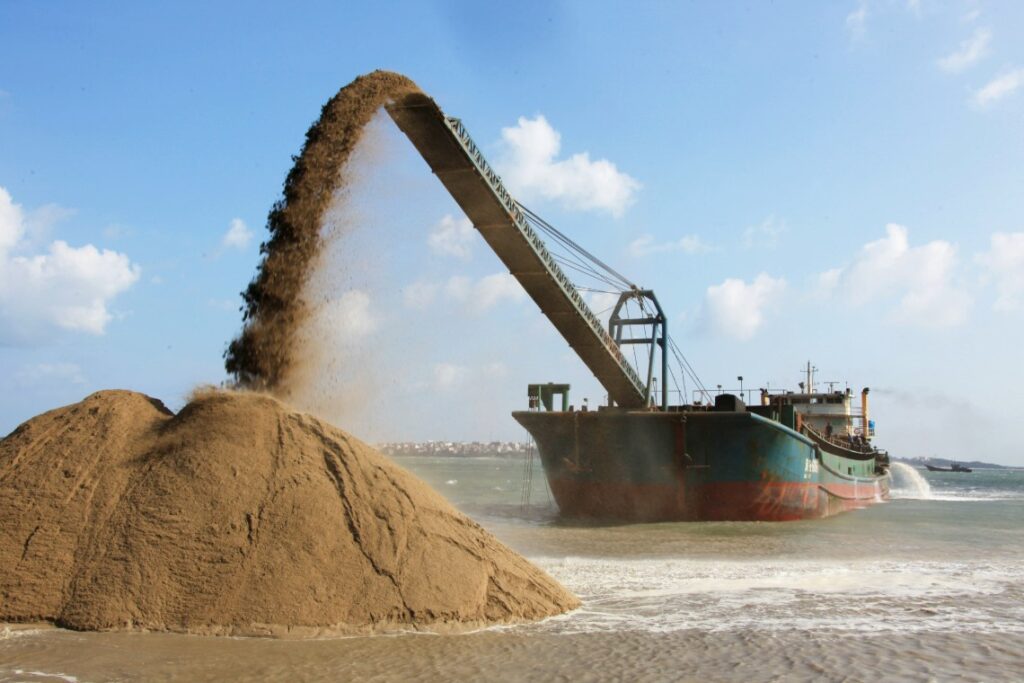
1. Optimizing Pump Efficiency
Achieving maximum output from a dredging pump begins with proper priming and startup procedures. Air pockets in the system can significantly reduce efficiency and lead to cavitation, so ensuring the pump is fully primed before operation is critical. Maintaining the optimal slurry concentration—balancing solids content and water flow—helps reduce energy consumption and ensures consistent material delivery. Both the hydraulic dredge pump and the suction dredge pump benefit from monitoring inlet and outlet pressures to keep performance within the recommended operating range, minimizing stress on system components.
2. Reducing Wear and Extending Pump Life
A well-maintained dredging pump delivers better long-term value, particularly in abrasive sand reclamation and beach nourishment projects. Using wear-resistant materials, such as high-chrome alloys for impellers and liners, helps combat erosion caused by coarse particles. Scheduled maintenance—especially regular impeller inspections and clearance checks—prevents excessive wear and protects internal components. For high-capacity jobs, a hydraulic dredge pump with heavy-duty liners can withstand continuous operation. In contrast, a suction dredge pump can be equipped with specialized wear parts for precision dredging in abrasive environments.
3. Minimizing Downtime in Critical Projects
Reducing downtime is vital in time-sensitive coastal projects where delays can lead to increased costs and environmental risks. Modular dredging pump systems allow for rapid replacement of critical components, ensuring operations resume quickly after maintenance. Incorporating remote monitoring tools provides real-time data on flow rates, pressures, and vibration levels, enabling proactive adjustments before failures occur. Whether deploying a hydraulic dredge pump for large-scale material transfer or a suction dredge pump for targeted sediment removal, integrating performance tracking helps maintain efficiency and avoid costly disruptions.
Case Examples and Real-World Applications
Beach nourishment and sand reclamation projects around the world demonstrate the efficiency and versatility of the dredging pump in coastal engineering. In large-scale shoreline restoration works, high-capacity systems have been deployed to transfer millions of cubic meters of sand from offshore borrow sites to eroded beaches, restoring protective profiles and enhancing recreational areas.
For instance, the use of a hydraulic dredge pump in a multi-phase coastal replenishment project allowed continuous high-volume material transfer over long distances, significantly reducing project timelines. Similarly, targeted sediment placement in environmentally sensitive zones has been achieved using a suction dredge pump, which offers precise control to avoid disturbing adjacent habitats.
Sand reclamation has also played a crucial role in port expansions and naval base upgrades, where reclaimed land is used for berths, storage areas, or defense infrastructure. In such applications, the durability and performance of the dredging pump directly contribute to project efficiency, lowering maintenance costs and ensuring uninterrupted operational schedules. These performance gains translate into measurable ROI through reduced downtime, longer equipment life, and accelerated completion timelines.
Compliance, Safety, and Environmental Considerations
Effective beach nourishment and sand reclamation require strict adherence to regulatory, environmental, and safety protocols. Before deploying a dredging pump, sediment sources must be approved through ecological impact assessments to ensure material quality and compatibility with the receiving environment. Regulatory compliance with coastal engineering standards not only safeguards ecosystems but also protects projects from legal and operational delays.
Operational safety is equally critical. Whether using a hydraulic dredge pump for large-scale reclamation or a suction dredge pump for targeted dredging, crews must follow strict marine safety procedures, including vessel stability checks, pipeline inspection, and emergency shutdown readiness. Proper training and hazard awareness ensure both the safety of personnel and the protection of the surrounding environment. Additionally, environmental best practices—such as turbidity control and sediment spill prevention—help maintain water quality and minimize ecological disruption during dredging operations.
Maximizing ROI in Coastal Pumping Projects
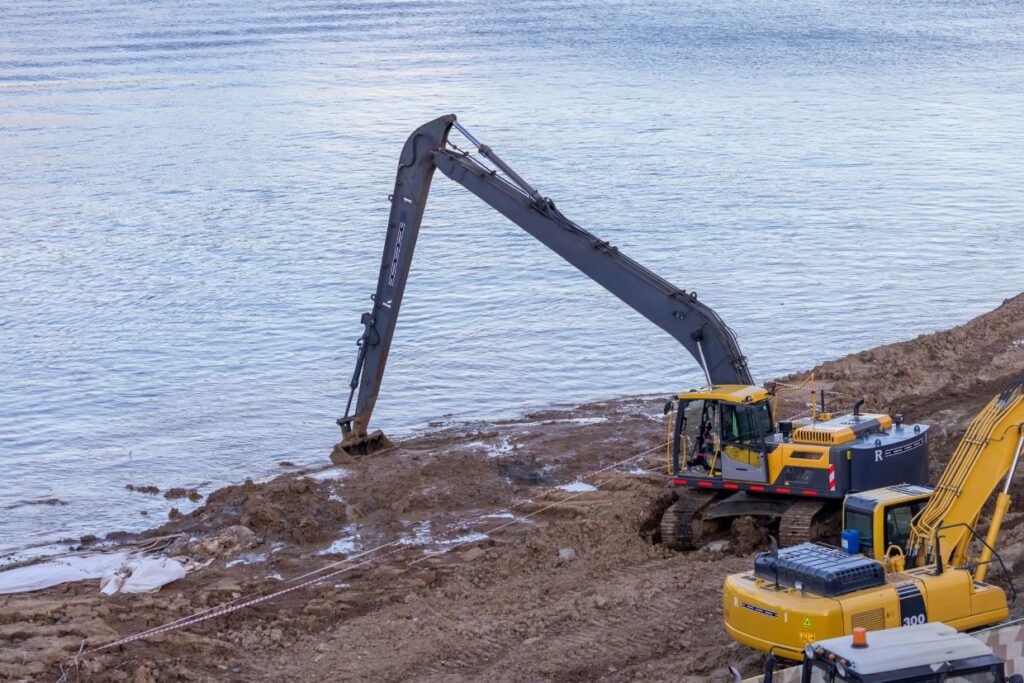
Maximizing return on investment in beach nourishment and sand reclamation starts with selecting the right dredging pump for the job. A well-matched system reduces operational inefficiencies, minimizes unplanned downtime, and ensures consistent material delivery. High-performance pumps may require a greater initial investment. Still, their durability, higher output, and lower maintenance demands often result in a lower total cost of ownership over the project lifecycle.
Energy efficiency plays a central role in cost control. Modern hydraulic dredge pump designs are engineered for optimal flow and head performance, reducing fuel consumption while maintaining high throughput rates. Similarly, a suction dredge pump can deliver targeted dredging with reduced energy use, particularly in projects requiring precise sediment placement and minimal rehandling.
Long-term savings are realized through correct pump selection that aligns with sediment type, pumping distance, and environmental conditions. Choosing a dredging pump with the right wear resistance, hydraulic efficiency, and system compatibility ensures operational longevity, lower maintenance costs, and sustained productivity across multiple projects.
Conclusion
Beach nourishment and sand reclamation demand equipment that can perform reliably in challenging marine environments while meeting strict project timelines and environmental regulations. The dredging pump—whether configured as a high-capacity hydraulic dredge pump or a precision-focused suction dredge pump—is at the core of these operations, enabling efficient sediment transfer and placement.
Success in coastal engineering depends on more than just powerful equipment. Technical planning, proper pump sizing, and disciplined operational practices all contribute to achieving project goals on time and within budget. By leveraging advanced pump technology and proven best practices, project teams can protect coastlines, restore valuable land, and enhance operational efficiency.
Hydro Pump and Dredge offers tailored dredging pump solutions to meet the unique demands of government, industrial, and marine infrastructure projects. Our team can provide technical guidance, equipment recommendations, and operational support to ensure every project delivers maximum value and long-term performance.


